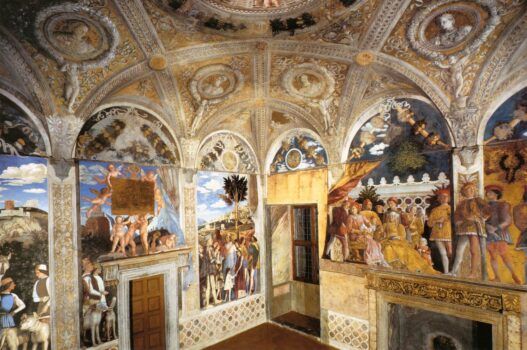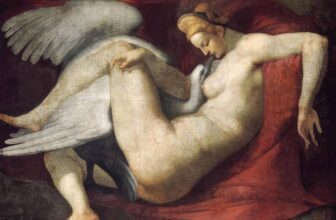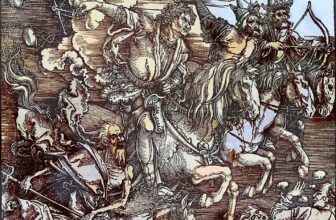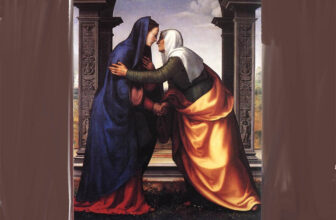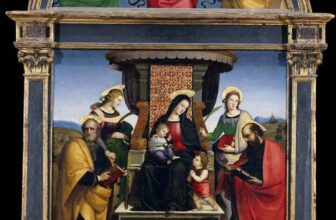Andrea Mantegna’s Most Famous Paintings
| Invest in Hidden Masterpiece: Rare Antique Oil Paintings For Sale. Limited Originals Available 💰😊 Are you looking for authentic hidden masterpiece? Explore old master antique oil paintings from the Renaissance and Baroque eras. From 16th-century portraits to 18th-century landscapes. Authenticity guaranteed, Old Master antique oil paintings for sale. Shop Now! 🎨 Renaissance And Baroque Art Landscape Antique Paintings Old Master Portrait Paintings |
In the pantheon of Renaissance artists, Andrea Mantegna stands as a towering figure whose influence helped shape the course of European art. Born in the early 15th century, Mantegna was not only a painter but also a visionary who merged classical ideals with a uniquely personal style, forging a path that countless artists would follow. His work exhibits a deep understanding of perspective, a reverence for antiquity, and an intensity that places him among the true innovators of the Renaissance. In this post, we will delve into the life and story of Andrea Mantegna, explore his most famous paintings, examine the significance of his work, uncover where his artworks are located today, and reflect on his enduring legacy.
The Life and Story of Andrea Mantegna
Andrea Mantegna was born in 1431 in Isola di Carturo (present-day Isola Mantegna), a small town near Padua in northern Italy. Raised in modest circumstances, he displayed artistic talent from an early age. At around the age of 11, he became the apprentice of Francesco Squarcione, a painter and art collector who claimed to have trained over 100 pupils. Squarcione was deeply passionate about Roman antiquity, and this passion rubbed off on the young Mantegna, who developed a lifelong fascination with classical sculpture and architecture.
By 17, Mantegna had already made a name for himself, breaking away from Squarcione due to disagreements over artistic direction and compensation. His early works were heavily influenced by the Paduan School and the sculptural forms of Donatello, whose work Mantegna admired.
In 1453, he married Nicolosia Bellini, the sister of the renowned Venetian painters Giovanni and Gentile Bellini. This union linked Mantegna with one of the most important artistic families in Renaissance Italy, and mutual influence between the Mantegna and Bellini styles can be seen in their works.
Mantegna’s career was closely associated with the Gonzaga family, rulers of Mantua. In 1460, he became the court painter to Ludovico III Gonzaga and would remain in Mantua for most of his life. This relationship gave him the security and patronage needed to execute some of his most celebrated works, including elaborate fresco cycles and religious compositions.
What Is Andrea Mantegna Known For?
Andrea Mantegna is best known for his innovative use of perspective, mastery of foreshortening, and his ability to create deeply dramatic and emotionally powerful compositions. He was among the first artists to fully grasp and apply the principles of linear perspective, using them to bring a sculptural solidity to his figures and to create a sense of depth that was revolutionary for his time.
His painting style is characterized by sharp contours, classical architecture, and a palette that often leaned toward the cool and restrained. Mantegna also brought a rigorous archaeological sensibility to his work, his scenes of ancient Rome are filled with ruins, togas, and marble that reflect a scholar’s attention to detail.
Moreover, Mantegna was a bridge between the early Renaissance and the High Renaissance. His influence extended to artists such as Albrecht Dürer, Giovanni Bellini, and even Raphael, who adopted many of Mantegna’s compositional strategies and dramatic visual devices.
Andrea Mantegna’s Most Famous Paintings
While Mantegna created many significant works throughout his career, several stand out for their historical importance, visual innovation, and enduring popularity:
1. The Camera degli Sposi (Bridal Chamber), 1465–1474
One of Mantegna’s crowning achievements, the Camera degli Sposi is a room in the Ducal Palace of Mantua that Mantegna transformed with a remarkable fresco cycle. The walls and ceiling are adorned with scenes of the Gonzaga family, court life, and allegorical figures painted in such a way that they appear to extend the architecture of the room.
The most iconic part of this work is the oculus on the ceiling, a painted circular opening with cherubs and women leaning over a balustrade as if peering into the room below. This illusionistic trick is one of the earliest and most brilliant examples of trompe-l’œil in Western art.
2. The Lamentation over the Dead Christ (c. 1480)
This painting is perhaps Mantegna’s most emotionally moving and technically astonishing work. The body of Christ is shown laid out on a stone slab, viewed from the feet, which loom large in the foreground. This daring use of extreme foreshortening was unprecedented and showcased Mantegna’s complete mastery of anatomy and perspective. The raw emotion of Mary and Saint John mourning beside the lifeless Christ adds a deeply human dimension to this religious masterpiece.
3. Saint Sebastian (Multiple Versions)
Mantegna painted Saint Sebastian at least three times, and each version captures a slightly different mood and symbolic message. His depictions of the saint show him tied to a classical column or ruins and riddled with arrows, his expression calm amid suffering. These paintings are remarkable not only for their anatomical precision but also for the contrast between the tortured human body and the serenity of the setting, often strewn with Roman artifacts.
4. The Triumphs of Caesar (c. 1484–1492)
This nine-panel series of paintings is a celebration of Roman military might, depicting Julius Caesar’s victorious return from battle. Now housed in the Royal Collection at Hampton Court Palace, London, these monumental works are considered among Mantegna’s most ambitious undertakings.
The series showcases hundreds of figures, soldiers, animals, and classical elements, all rendered with archaeological precision. The grandeur and scale of the Triumphs not only glorify Roman history but also serve as a metaphor for the Gonzaga family’s own political aspirations.
5. Adoration of the Magi (c. 1462)
Though Mantegna’s Adoration scenes are less numerous than some of his other subjects, one of his most well-known versions is a compact yet intricate panel showing the Virgin and Child being approached by the Magi. The regal opulence of the wise men’s attire contrasts with the humble setting, and Mantegna’s use of perspective and realistic expressions make this a deeply intimate and resonant religious scene.
How Many Paintings Does Andrea Mantegna Have?
While it is difficult to pinpoint an exact number due to the loss of some works and disputes over attribution, art historians generally credit Andrea Mantegna with around 60 to 70 major paintings and frescoes. This includes both standalone panel paintings and large-scale fresco cycles.
Additionally, Mantegna was involved in the design of engravings and was one of the early painters to recognize the potential of printmaking. Although few prints can be definitively attributed to him, his workshop produced a number of significant works under his influence.
What Is the Most Expensive Painting by Andrea Mantegna?
Mantegna’s works are rarely available on the open market due to their immense historical and cultural value. However, one notable sale took place in 2003, when his painting Descent into Limbo (also known as The Resurrection of Christ) was sold privately for an estimated $30 million. Though this figure is not officially confirmed, it makes the painting one of the most expensive works by an early Renaissance artist ever sold.
Most of Mantegna’s masterpieces are housed in major museum collections and are considered priceless due to their rarity and influence on Western art.
Where Are Andrea Mantegna’s Paintings Located Today?
Mantegna’s works are spread across some of the world’s most prestigious museums and historical sites. Key locations include:
-
Ducal Palace, Mantua (Italy) – Home to the Camera degli Sposi frescoes.
-
Pinacoteca di Brera, Milan (Italy) – Houses the iconic Lamentation over the Dead Christ.
-
Louvre Museum, Paris (France) – Holds multiple paintings, including Saint Sebastian and Madonna della Vittoria.
-
National Gallery, London (UK) – Displays The Introduction of the Cult of Cybele at Rome and The Triumphs of Caesar (at Hampton Court Palace).
-
Gemäldegalerie, Berlin (Germany) – Includes several religious panels and portraits.
-
Metropolitan Museum of Art, New York (USA) – Contains a few smaller works and prints.
-
Kunsthistorisches Museum, Vienna (Austria) – Holds The Holy Family and Saints.
These locations not only safeguard Mantegna’s physical legacy but also keep his artistic vision alive for future generations.
Andrea Mantegna’s Legacy
Andrea Mantegna’s contribution to art transcends technique; he changed the way artists thought about space, form, and narrative. His rigorous use of perspective and architectural setting gave paintings a new structural logic that helped define the Renaissance aesthetic. He was a pioneer in integrating the lessons of classical antiquity into contemporary art, bridging the worlds of mythology, history, and religion with unmatched intellect and clarity.
His impact was profound on both contemporaries and successors. Albrecht Dürer admired his prints and drawings. Giovanni Bellini, his brother-in-law, absorbed elements of Mantegna’s style and refined them in his Venetian masterpieces. Even Raphael, the great master of the High Renaissance, owes part of his dramatic composition and spatial innovation to Mantegna’s early explorations.
Moreover, Mantegna’s approach to illusion, particularly in the Camera degli Sposi, prefigured the ceiling frescoes of the Baroque period, especially those by Andrea Pozzo and Giovanni Battista Tiepolo. His daring use of foreshortening and visual tricks showed how art could transcend the flatness of the wall or canvas to create immersive experiences.
Andrea Mantegna was not merely a painter; he was a storyteller, an architect of illusion, and a scholar of antiquity. His life’s work, spanning religious scenes, mythological triumphs, and courtly grandeur, serves as a testament to the intellectual and artistic flowering of the Italian Renaissance.
His influence continues to be felt in modern times, not only in art history books and museum galleries but also in the fundamental principles of Western visual culture. Whether it’s the sorrow etched on the face of Mary in the Lamentation over the Dead Christ, the joyous pageantry of the Triumphs of Caesar, or the startling realism of his frescoes, Mantegna’s art continues to captivate, inspire, and awe.
In understanding Mantegna, we come closer to understanding the Renaissance itself, not just as a historical period, but as a moment of transformation, curiosity, and boundless human creativity.
